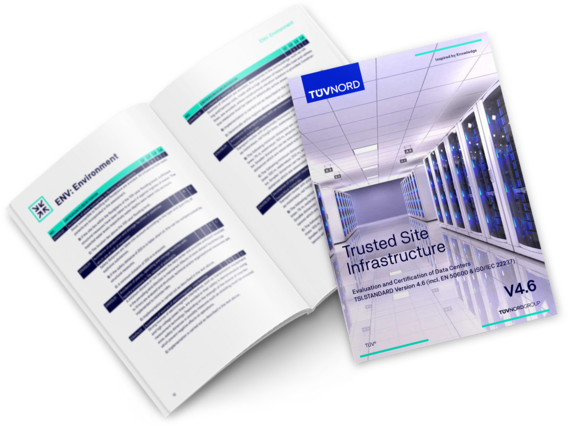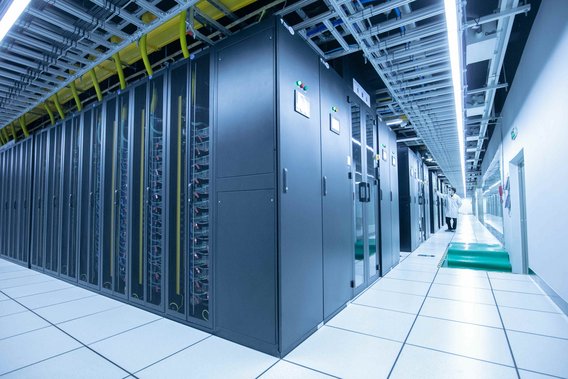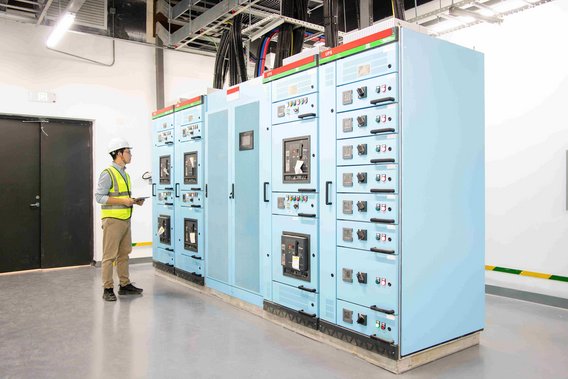The TSI.STANDARD has been developed by experts at TÜV NORD for over 20 years and is an applied industry standard for the physical security and availability of data centres in German-speaking countries. It takes into account findings and many years of experience from over 2,000 projects in the sense of "best practices". It is also based on the recommended measures in the IT baseline protection catalogues and the maximum availability requirements of the German Federal Office for Information Security (BSI). It takes into account the relevant DIN, EN and ISO standards - in particular DIN EN 50600 and ISO/IEC 22237 - as well as VDE regulations and VdS publications. The TSI.STANDARD has been continuously developed since 2002 with the aim of consistently reflecting the state of the art and standards.
Since 2016 (from V4.0), the TSI.STANDARD has also verifiably covered the requirements of DIN EN 50600 in full. EN 50600 supplements can optionally be tested if EN 50600 conformity is to be confirmed as a result.
Since the publication of V4.5, an ISO/IEC 22237-specific supplementary test is also possible. Requirements of the five published parts of the standard (ISO/IEC 22237 parts 1, 2, 3, 4 and 6) are included.
In this way, the TSI.STANDARD can be used to confirm three different norms and standards at the same time: TSI, EN 50600 and ISO/IEC 22237.
The TSI.STANDARD is currently available in version V4.6 from 01.11.2024 and replaces the previous version V4.5 from 01.07.2023.



















